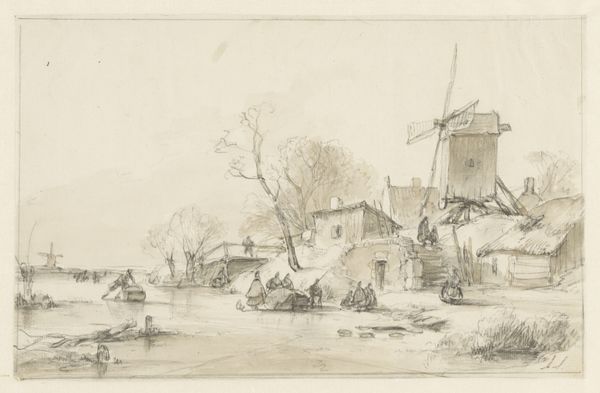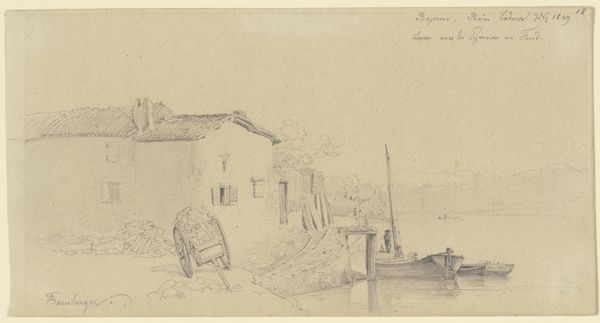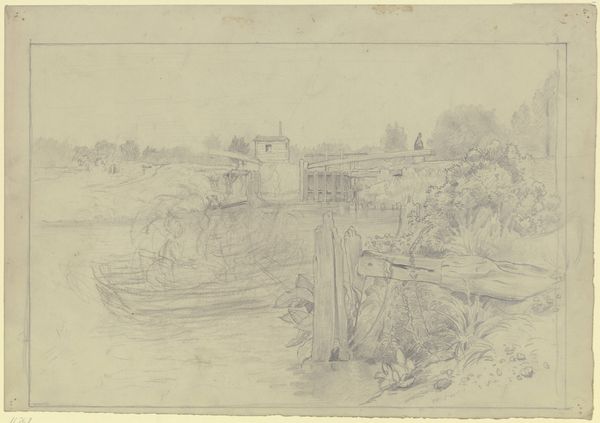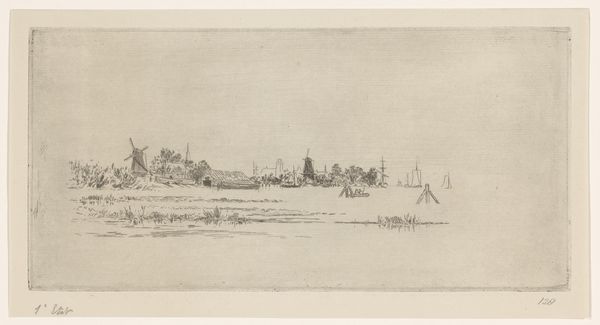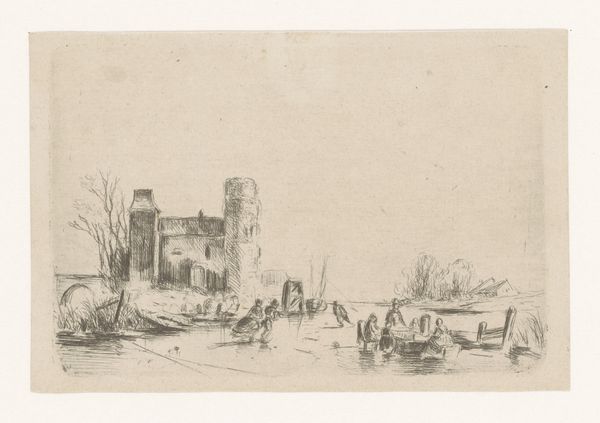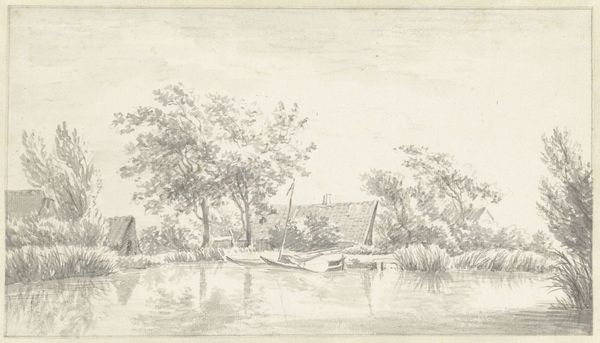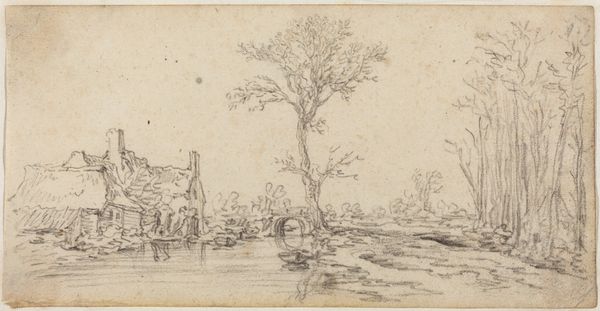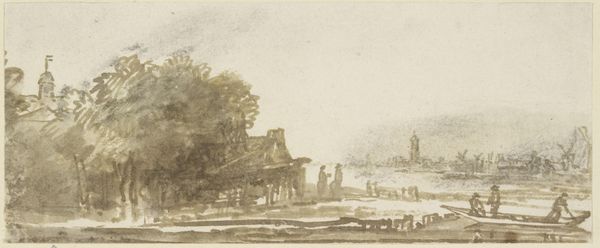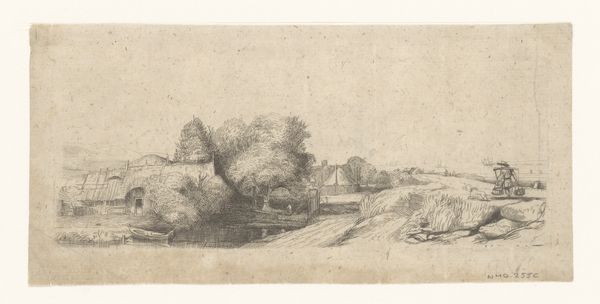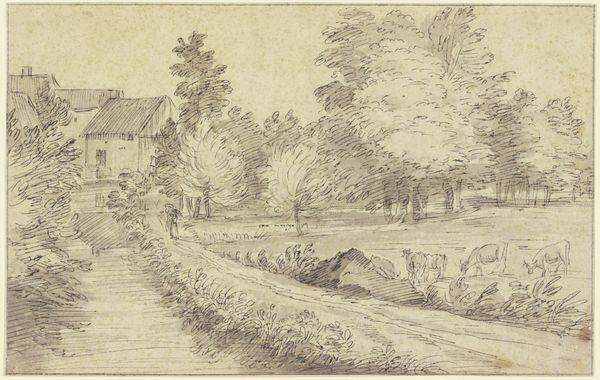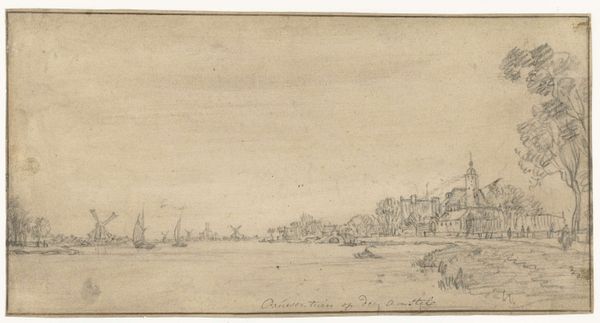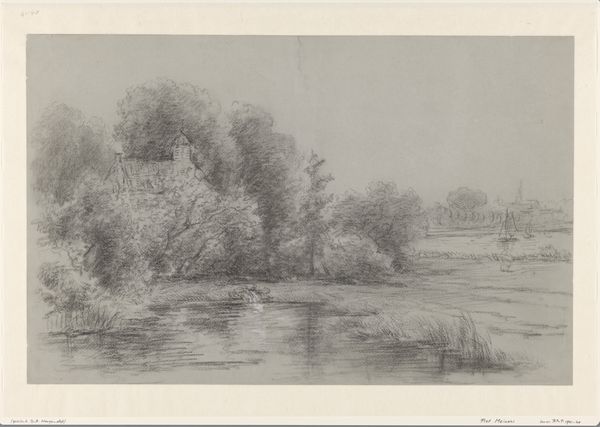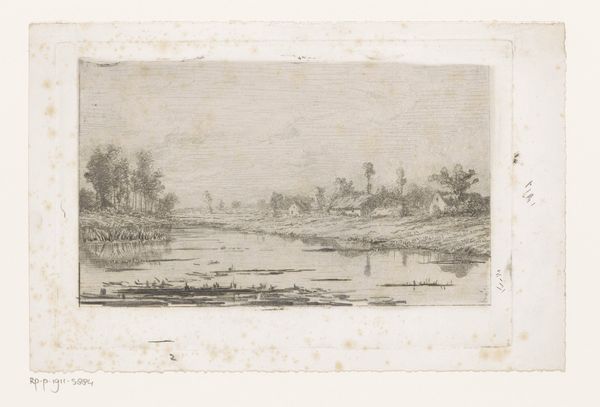
drawing, graphite
#
landscape illustration sketch
#
drawing
#
landscape
#
graphite
#
cityscape
#
italian-renaissance
Dimensions: sheet: 10 3/8 x 15 3/4 in. (26.4 x 40 cm)
Copyright: Public Domain
Curator: Here we have Gaspar van Wittel's "River View in Italy," dating from between 1667 and 1736, a graphite drawing currently residing here at the Met. Editor: It’s beautifully serene. The soft graphite lines create this almost hazy atmosphere, giving it a dreamlike quality. It’s also interesting to observe the lack of human activity—very still. Curator: Exactly! And it invites us to think about the conditions that made a drawing like this possible. Van Wittel, or Vanvitelli as he was also known, was a key figure in popularizing the veduta, or "view painting," genre in Italy. This drawing, and others like it, were often made as independent works for sale, but they also functioned as preparatory sketches for larger paintings back in his studio. Editor: So, it's like a form of visual colonialism in some ways, wouldn't you say? Capturing and then exporting a specific, and probably idealized, image of Italy to a northern European clientele. The romanticized imagery overlooks local struggles while exoticizing the picturesque. What materials was he employing, though? Curator: Graphite on paper. The paper itself would have been readily available through increased trade networks across Europe. Van Wittel utilized it in such a masterful way by building these tonal variations to depict crumbling architecture to the still water, to foliage. Also, note the architectural drawings included on the edges. Editor: Right. Looking at the social and economic aspects can truly deepen one’s experience and interpretation. This is more than just a pretty picture; it reflects economic exchange and power structures operating at the time. You see ruins becoming almost picturesque souvenirs. How much labor did the creation of these drawings require from his assistance or studio. The economics of studio practices! Curator: Absolutely. Looking through this lens changes how we perceive both the artistic skill and also what the drawing communicated socially at the time it was made. It shows how intertwined art is with other areas of production. Editor: It gives me a lot to consider. Thanks! Curator: Likewise. Seeing these drawings through new perspectives can breathe so much life into works.
Comments
No comments
Be the first to comment and join the conversation on the ultimate creative platform.
